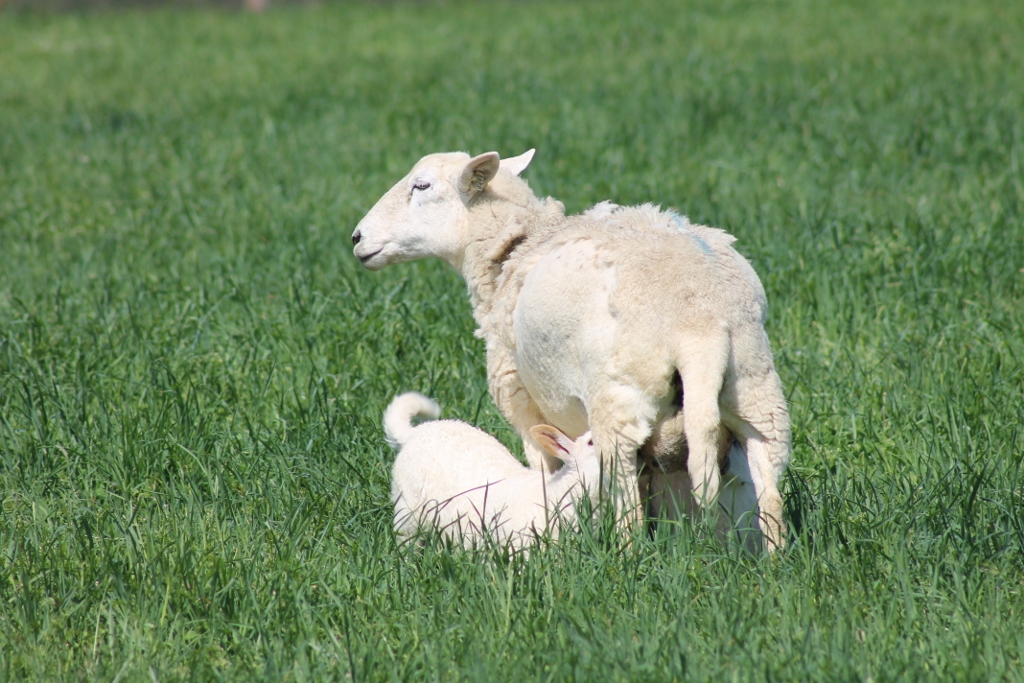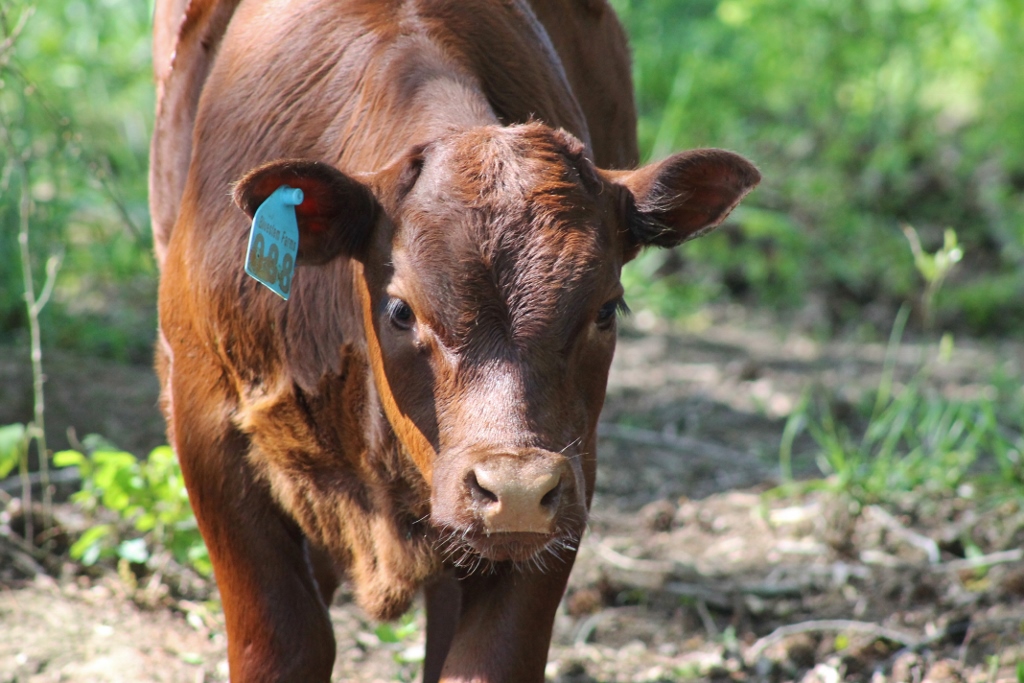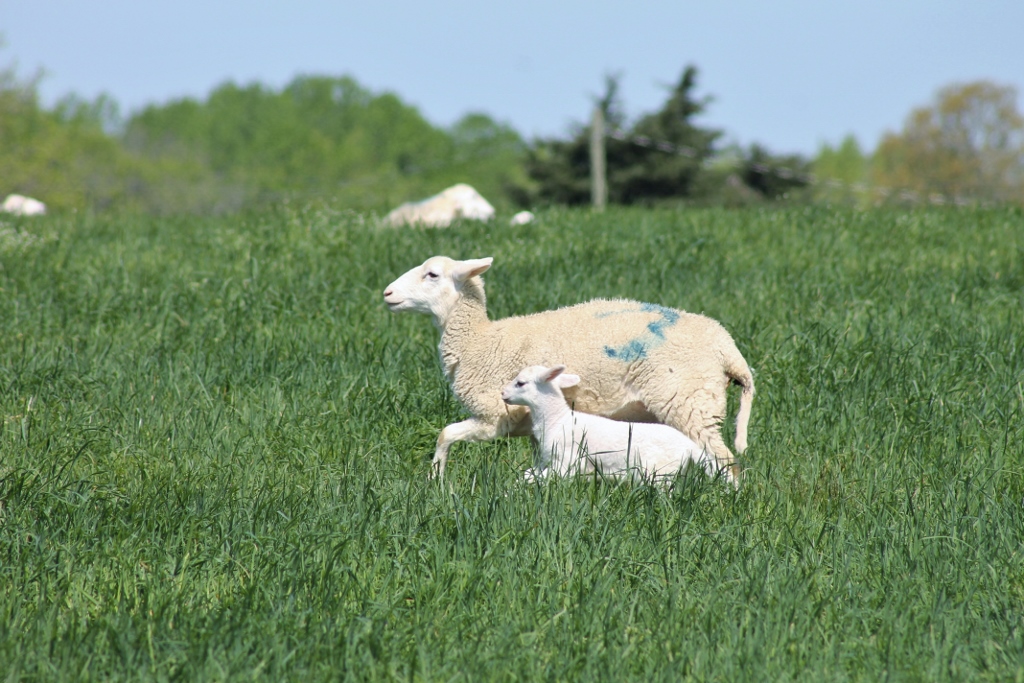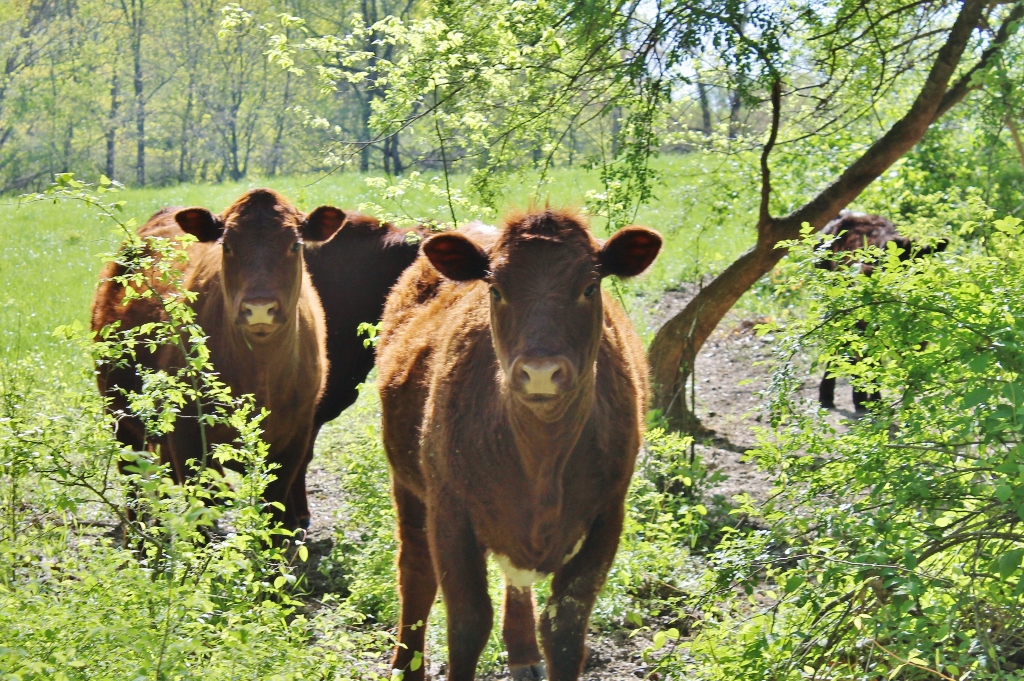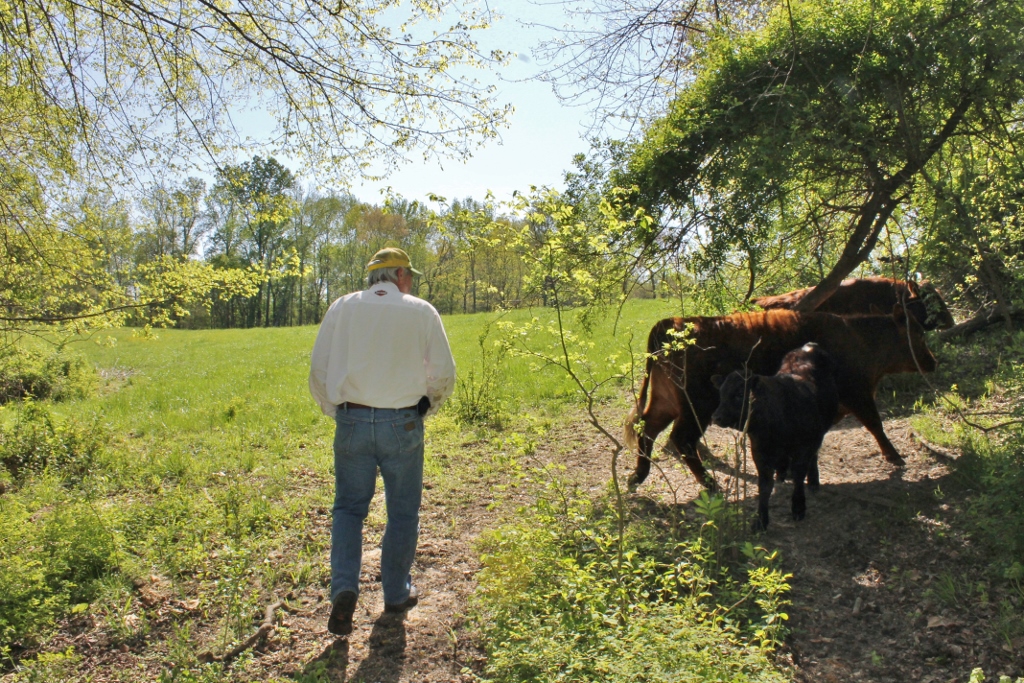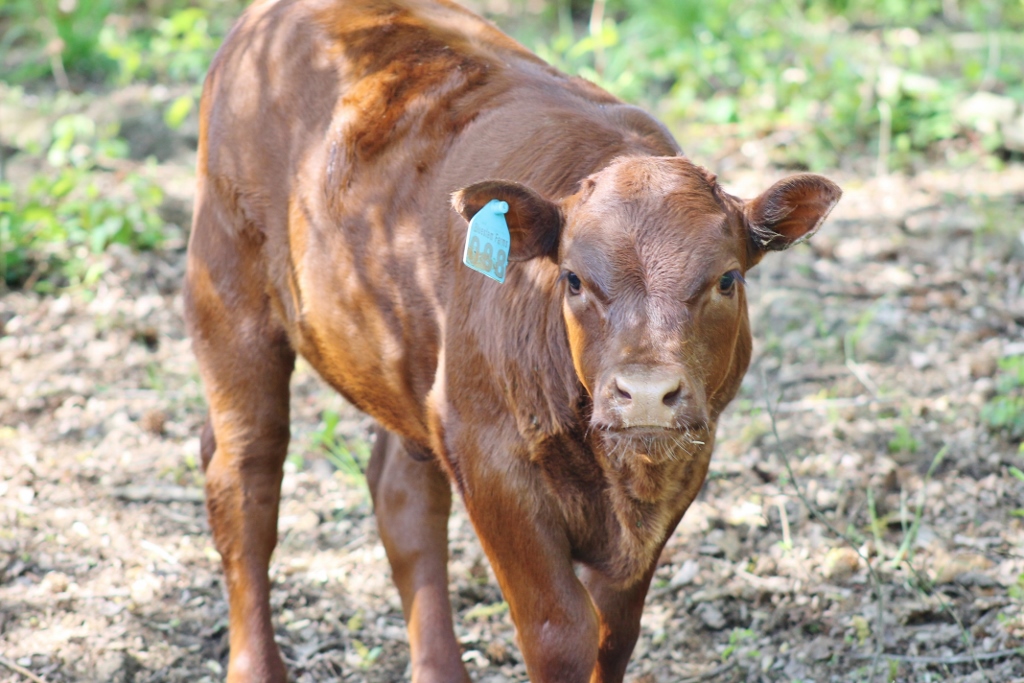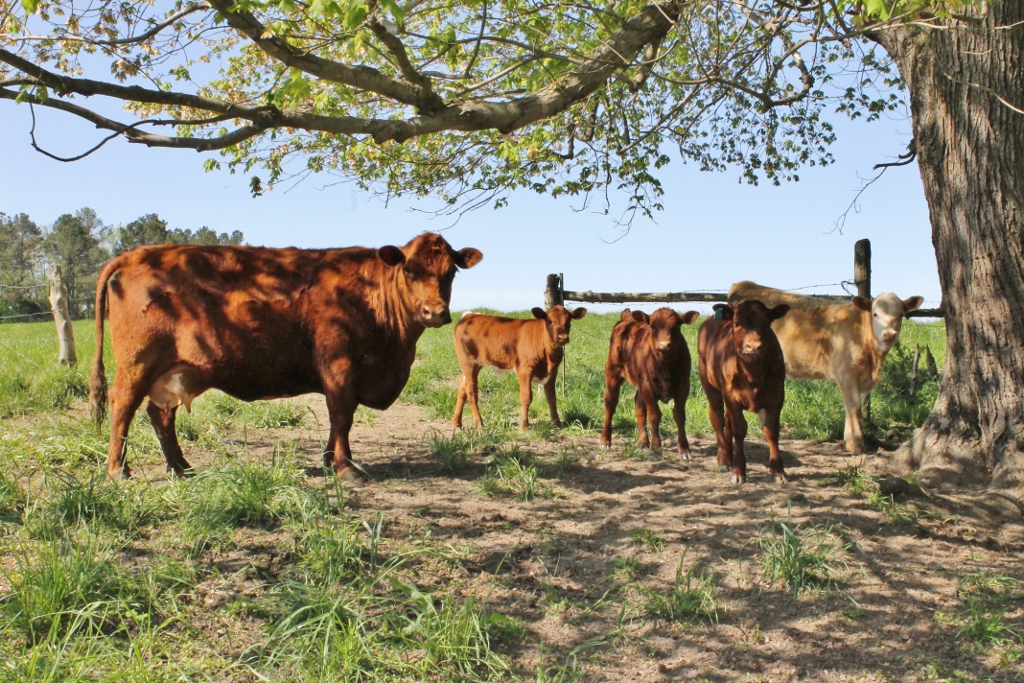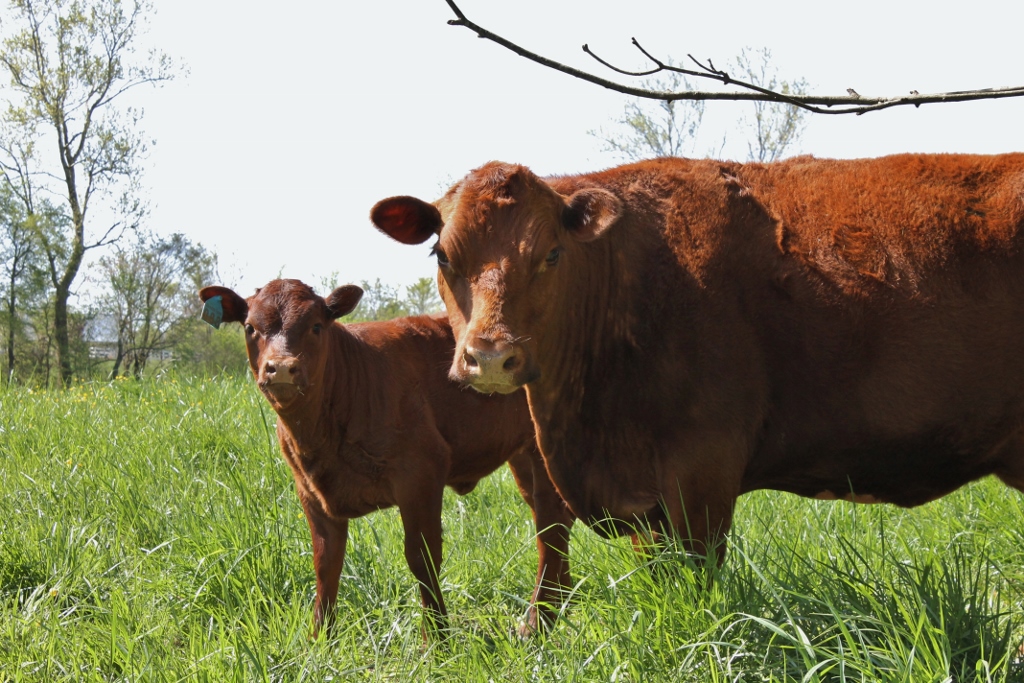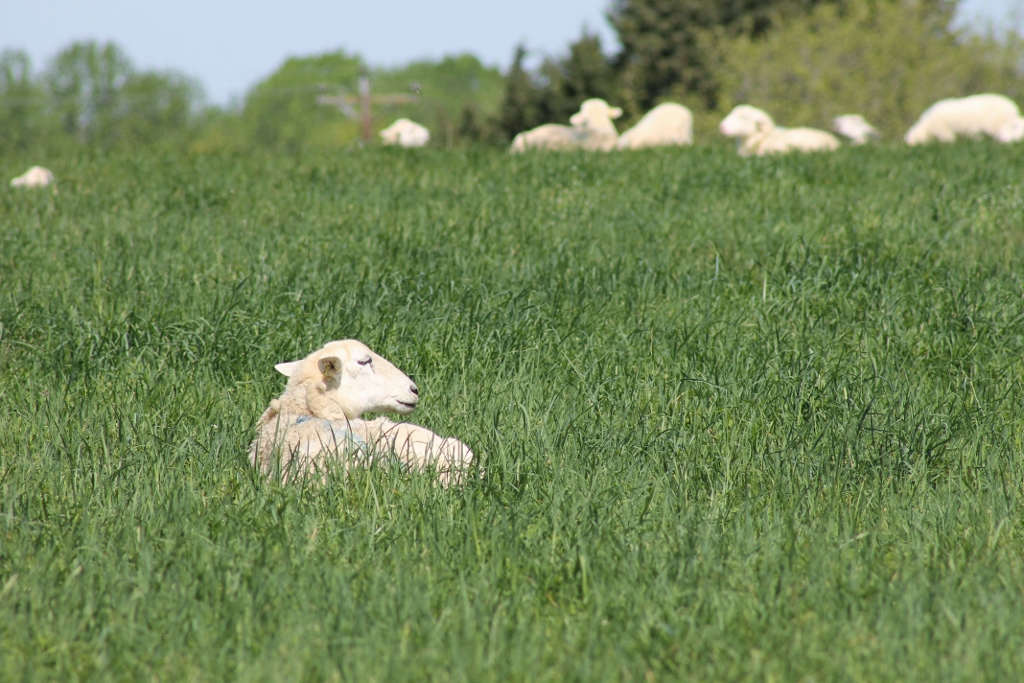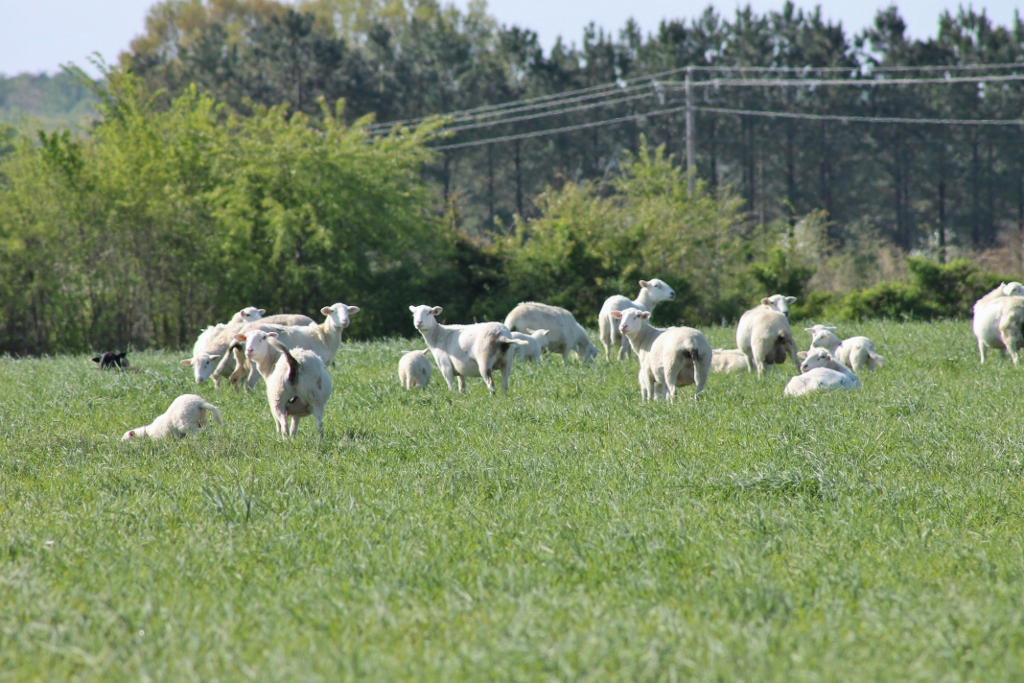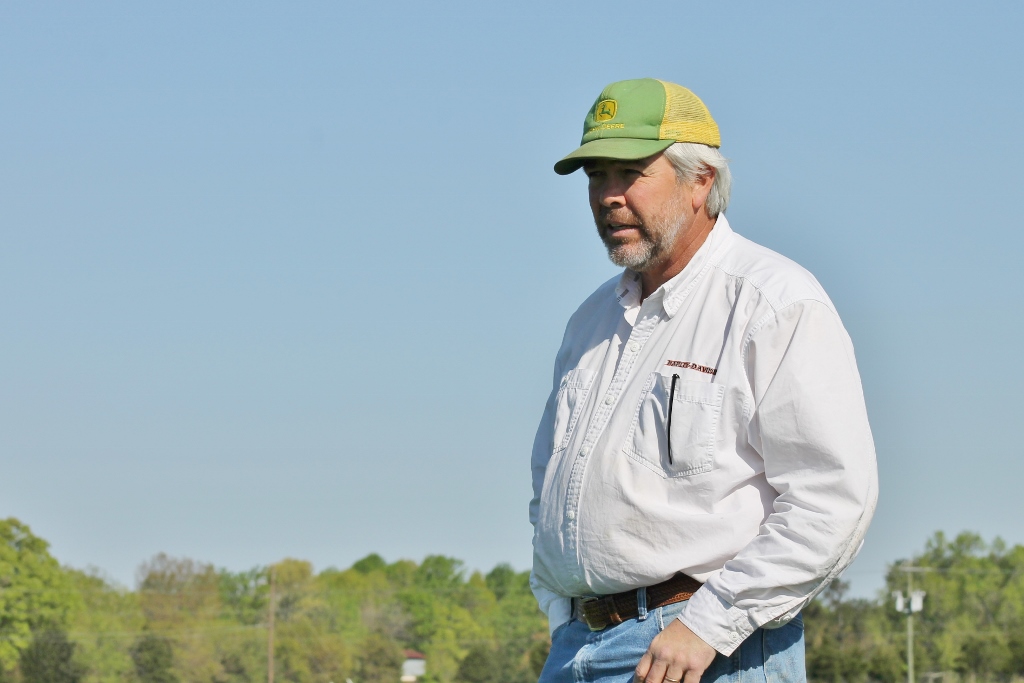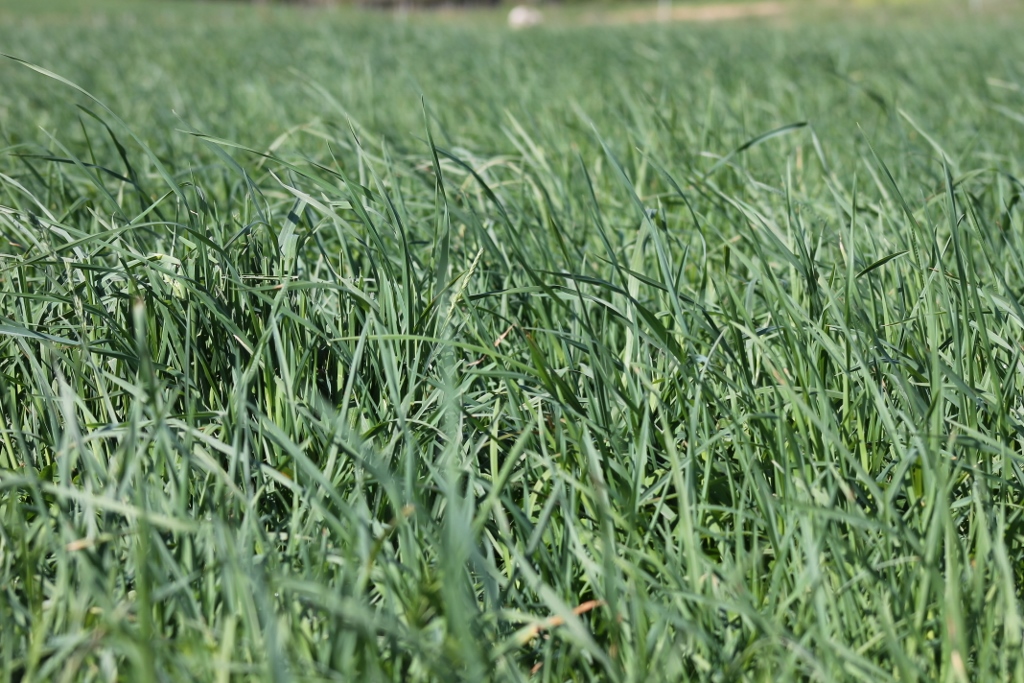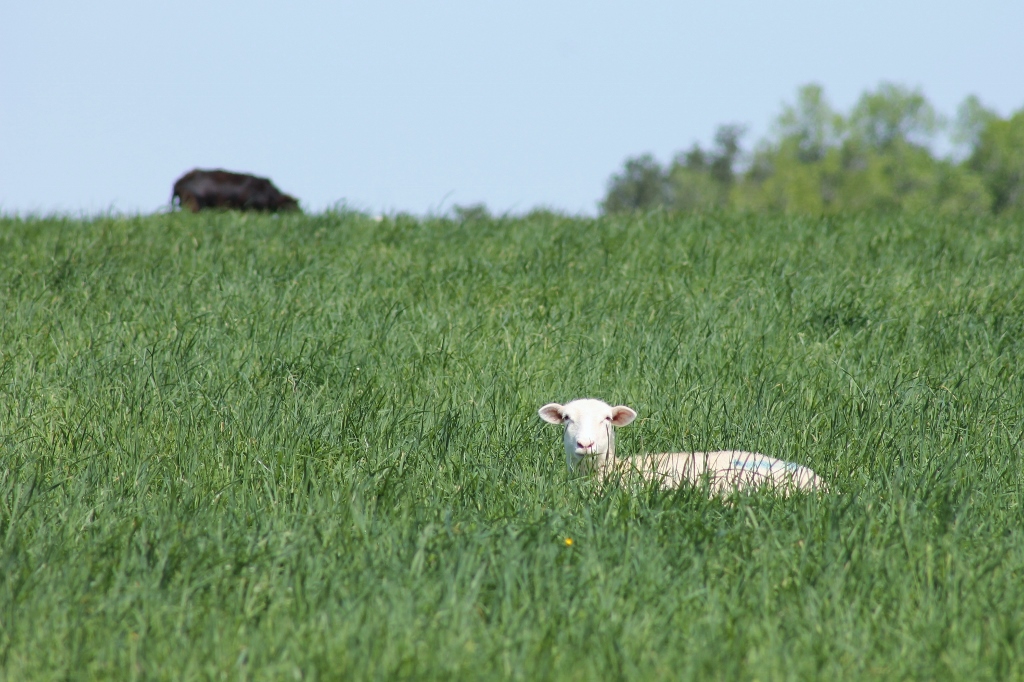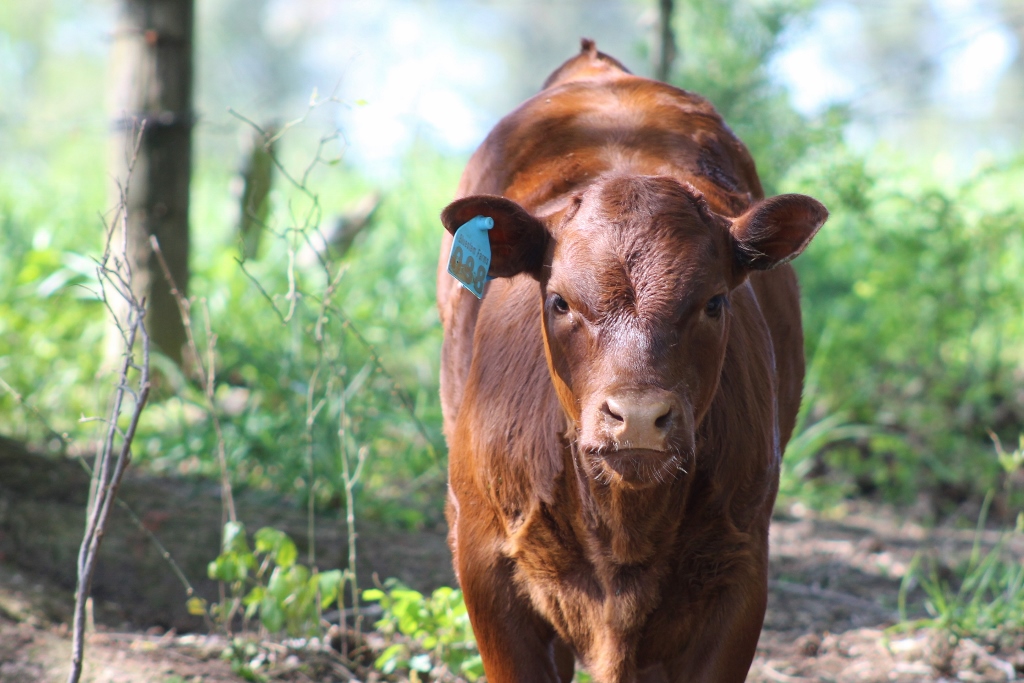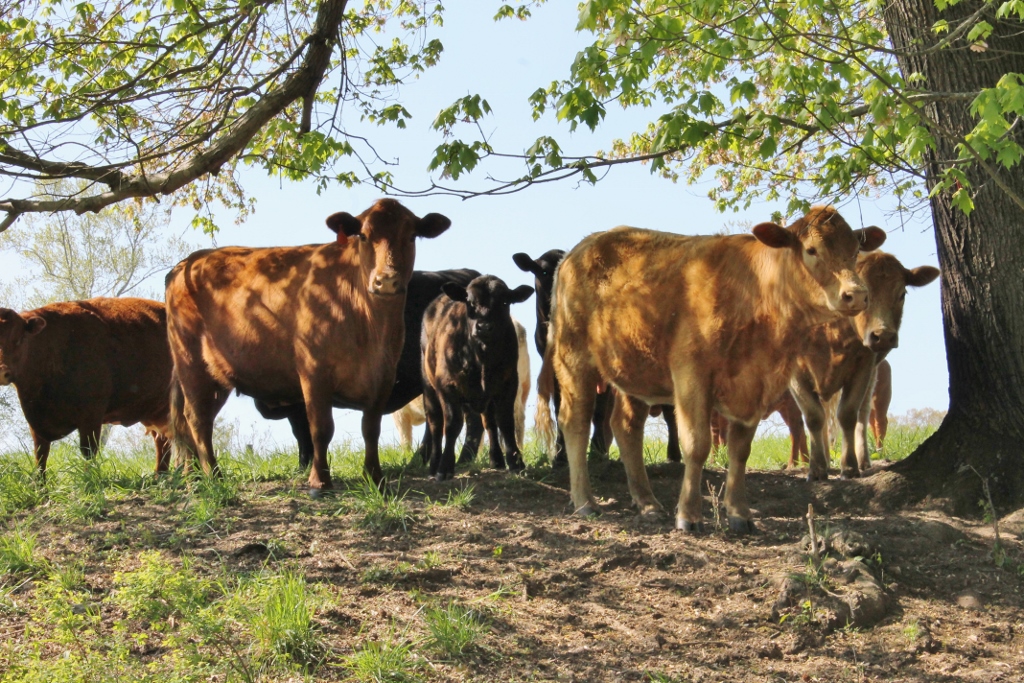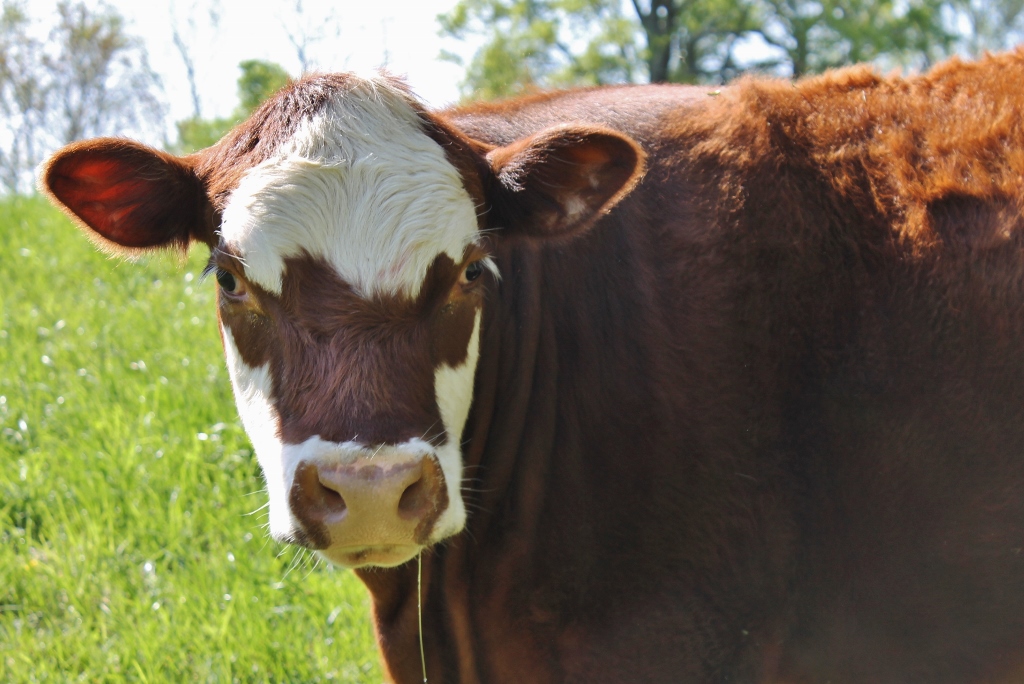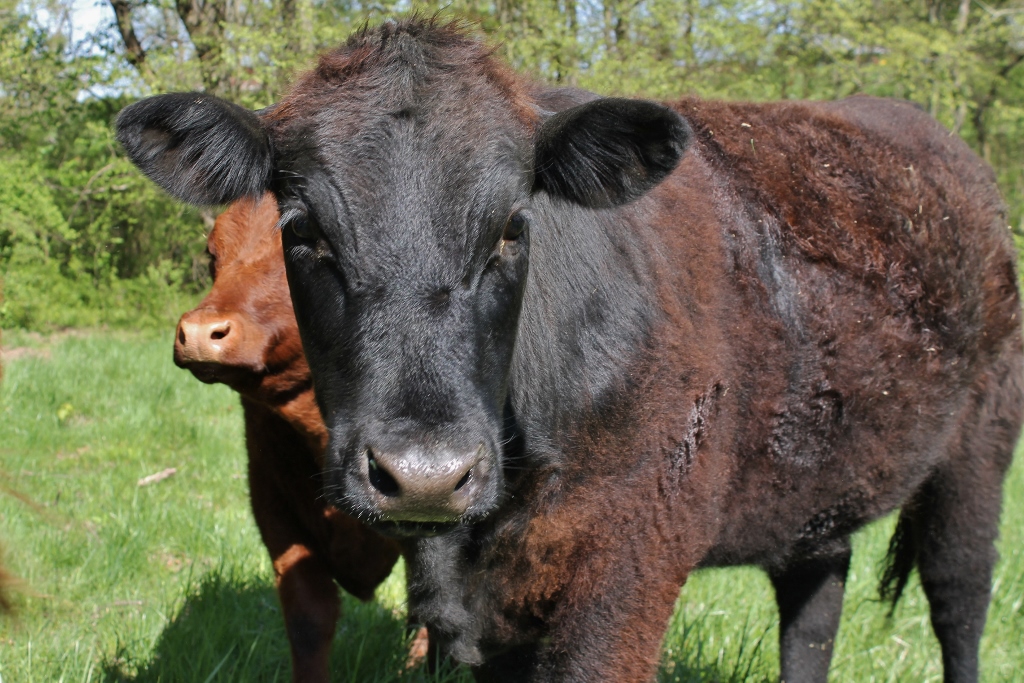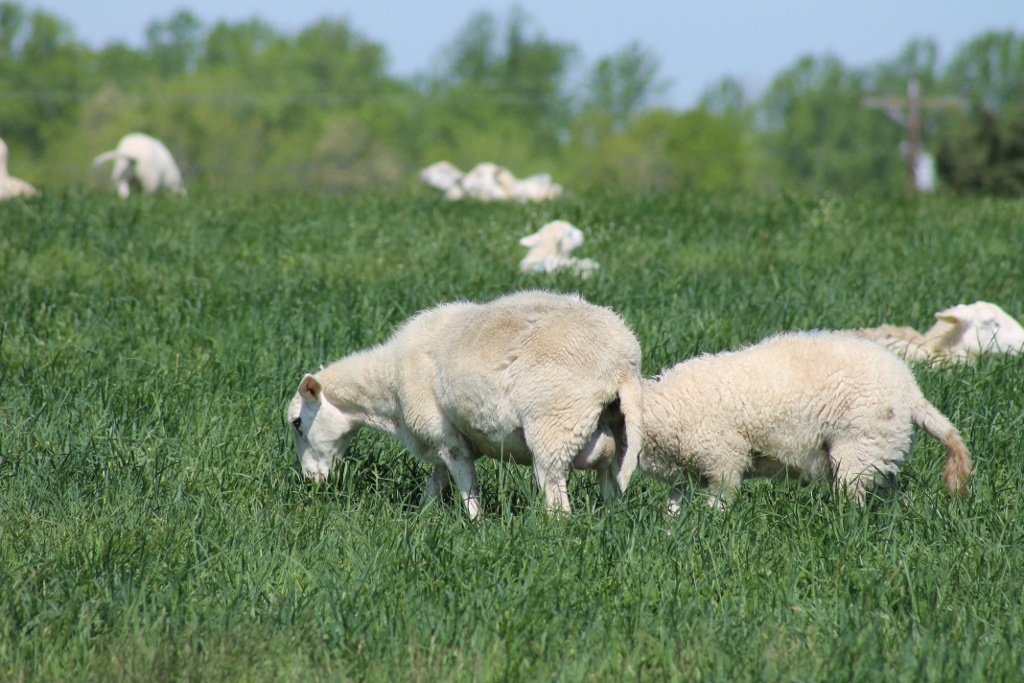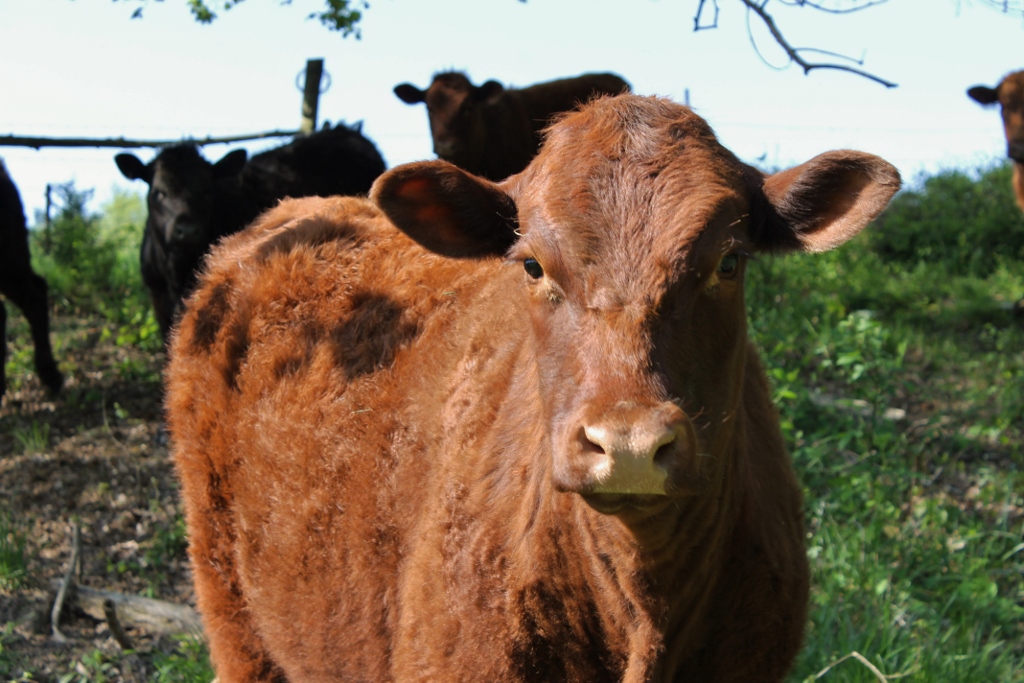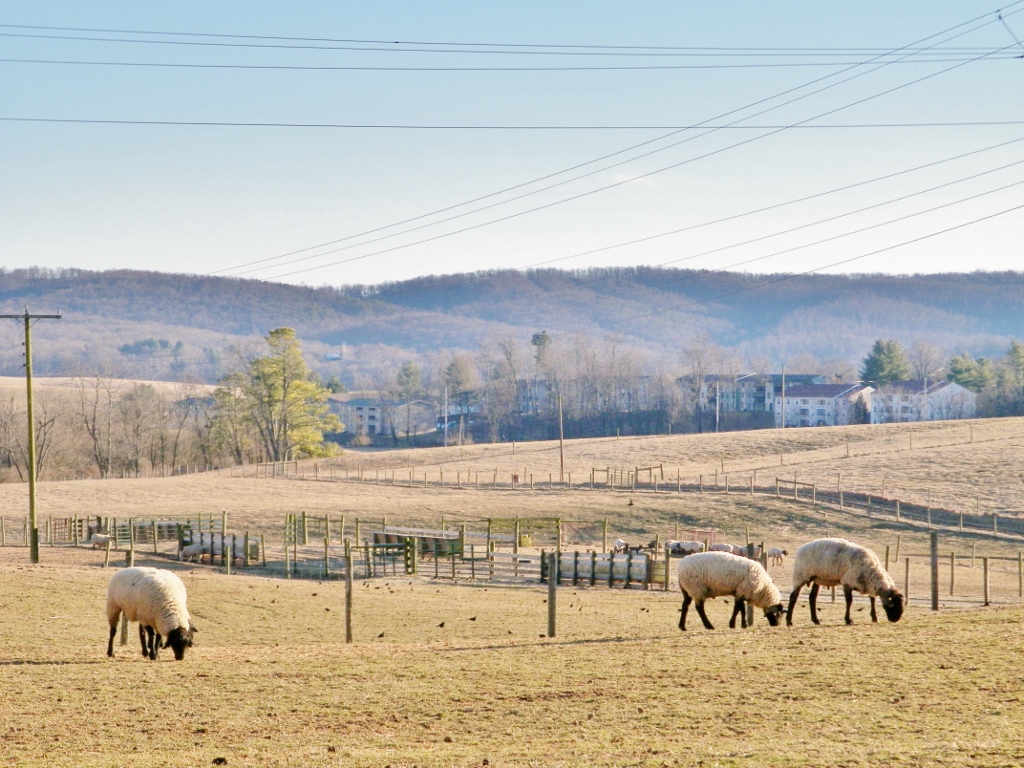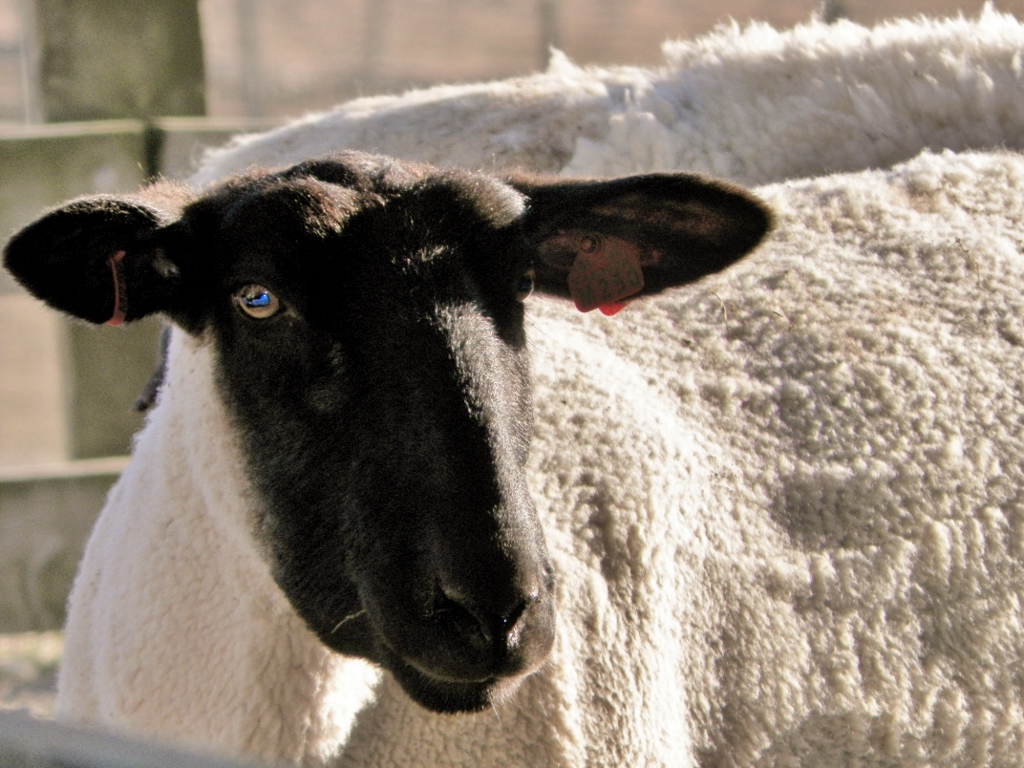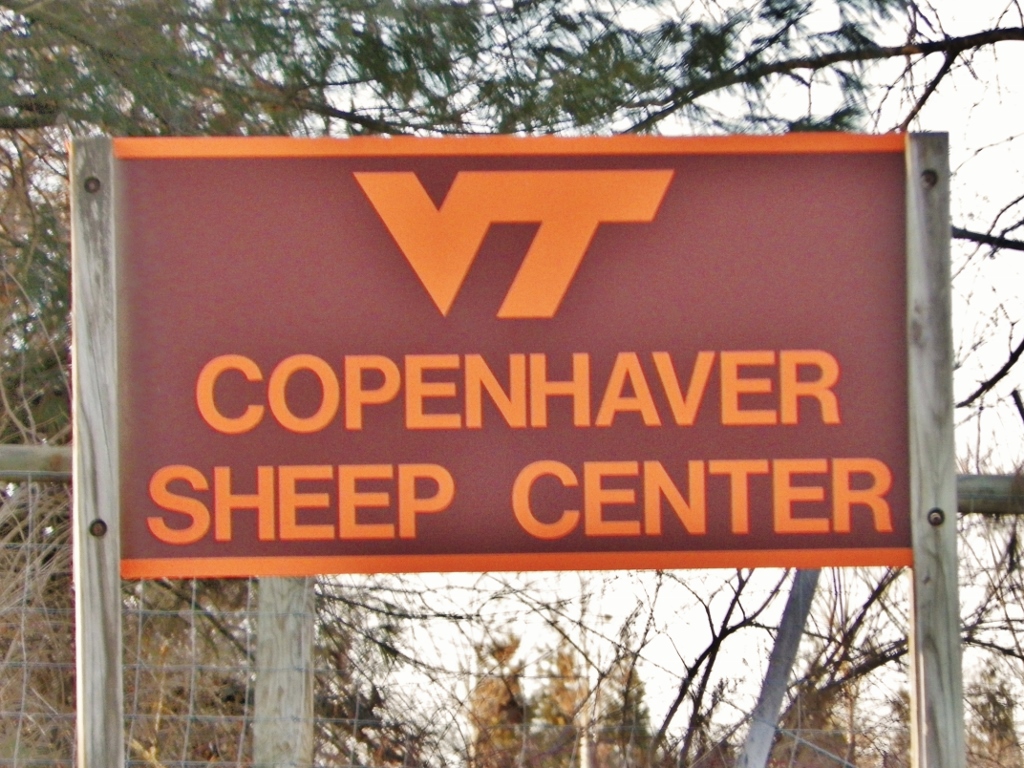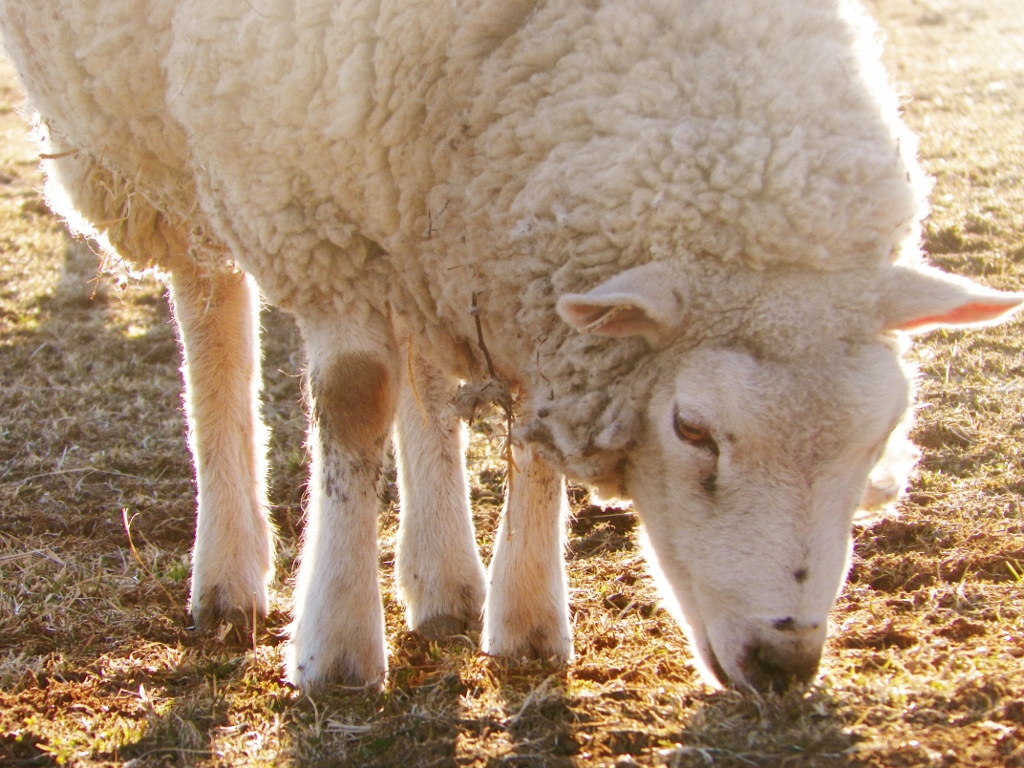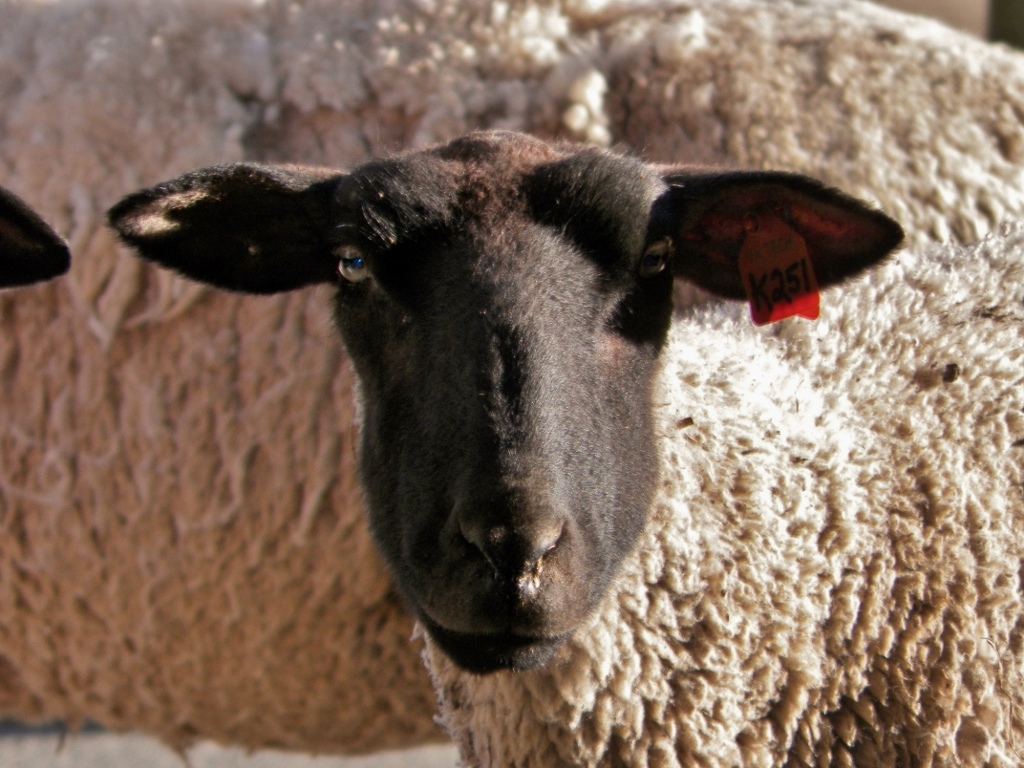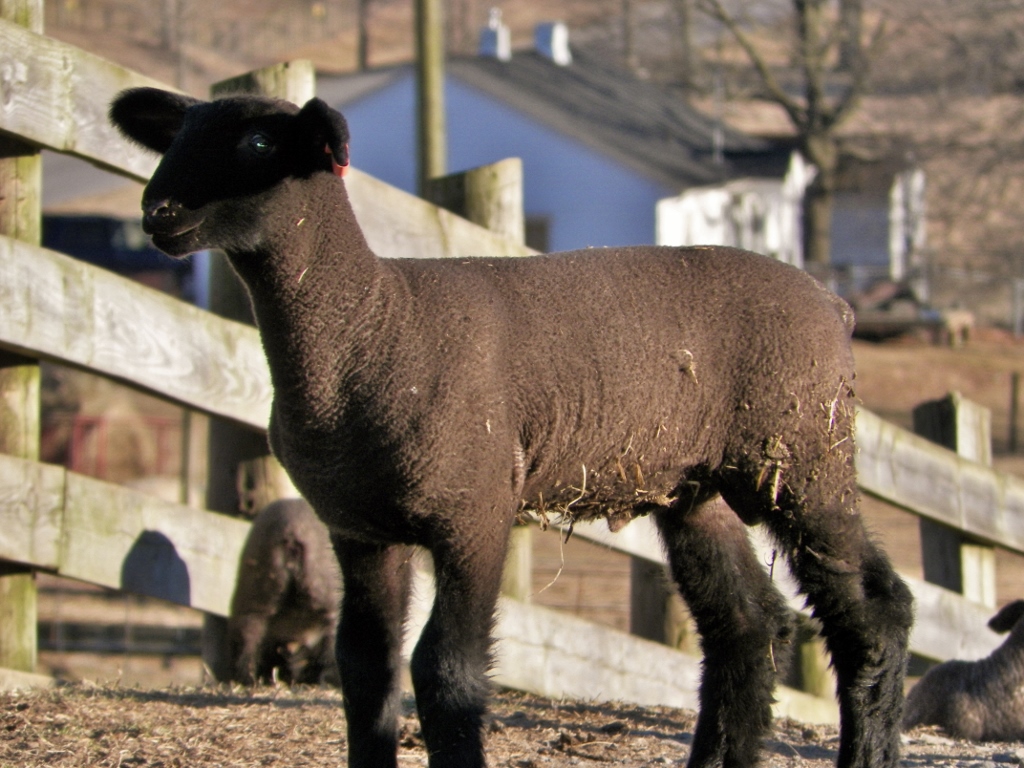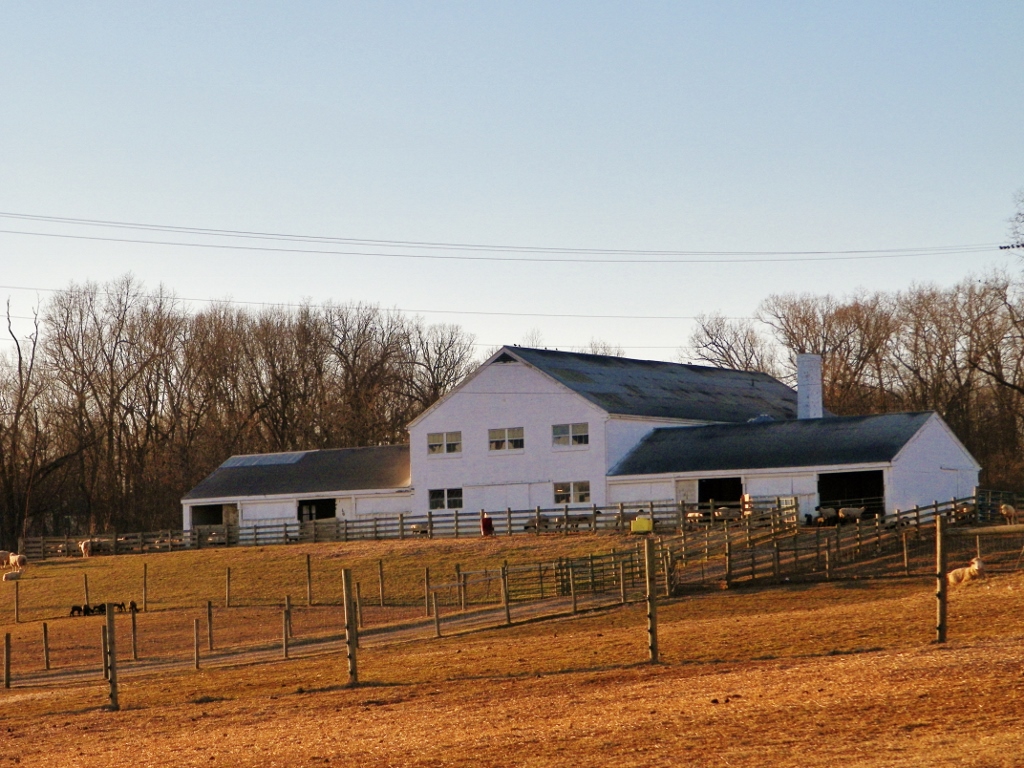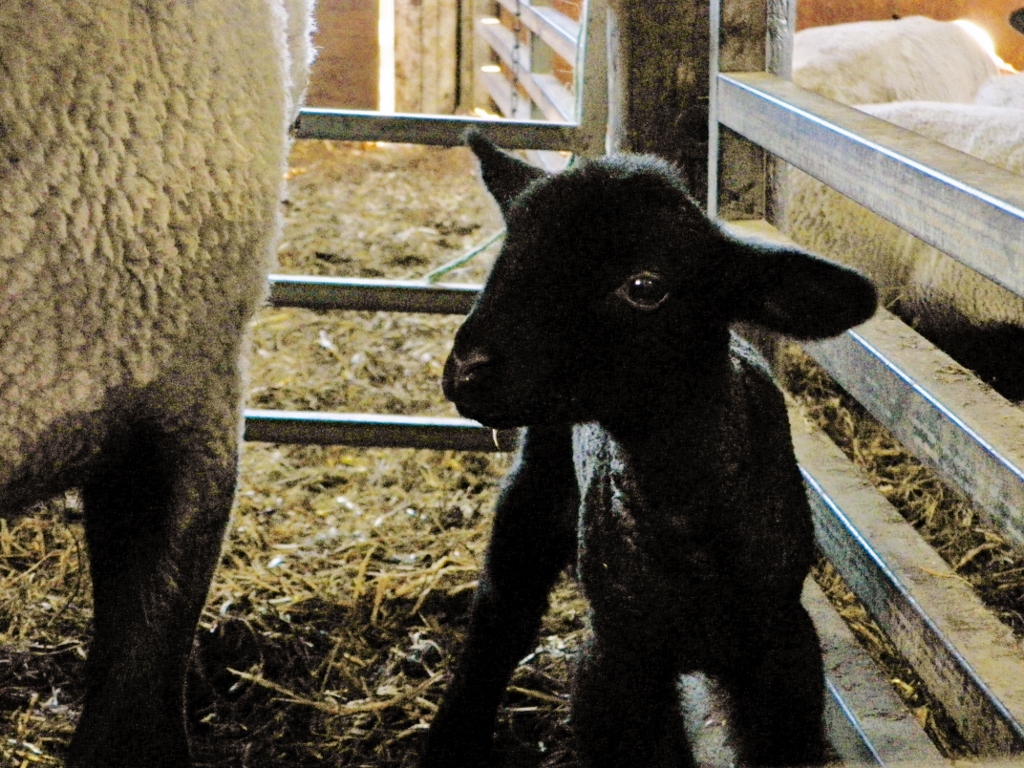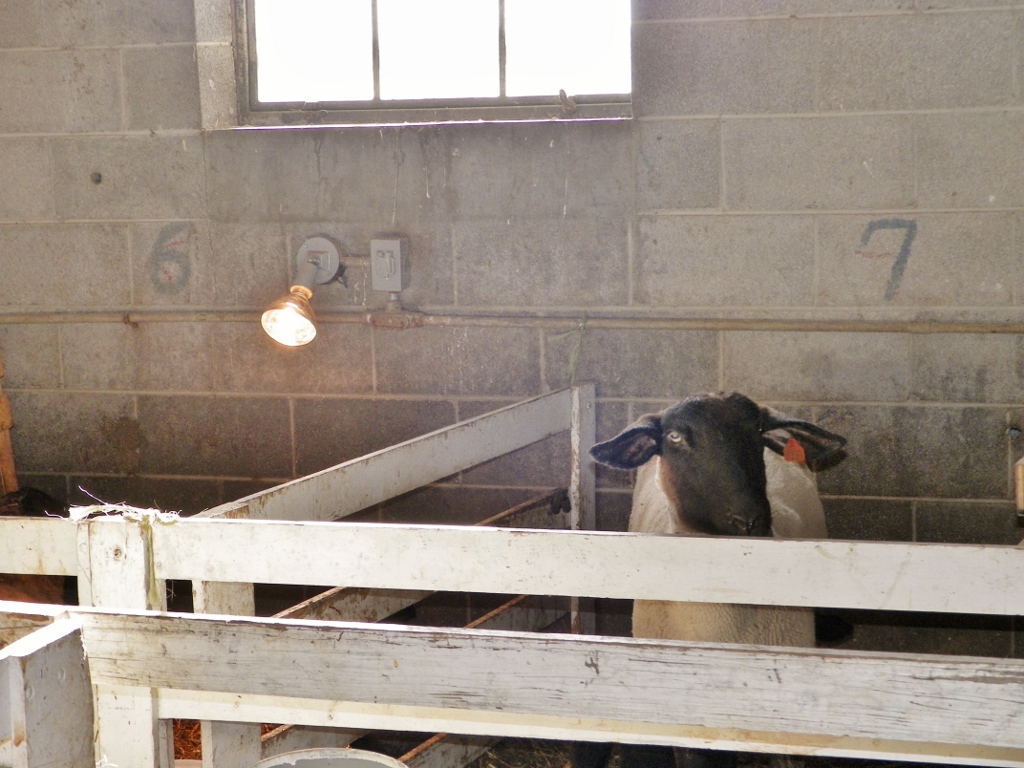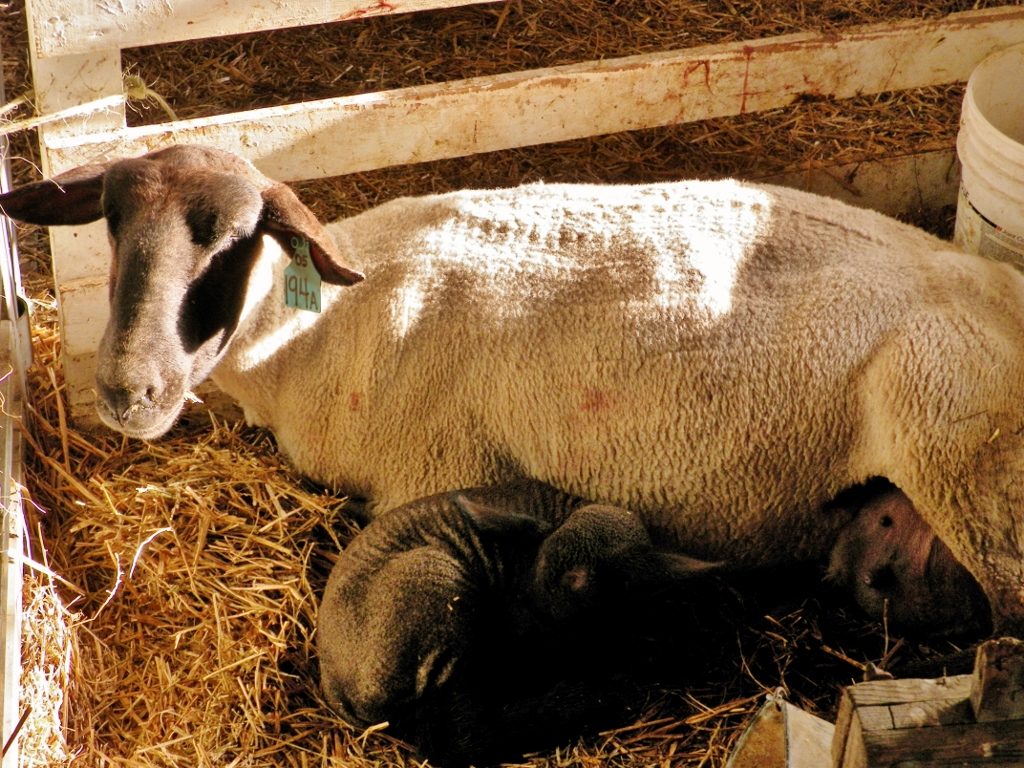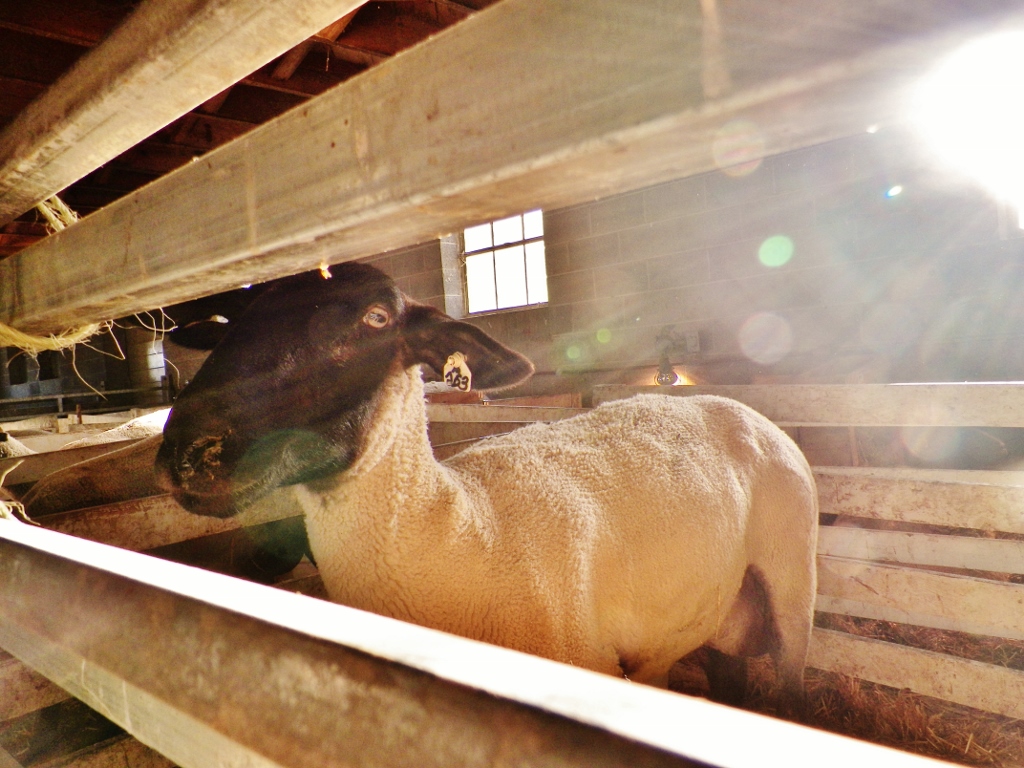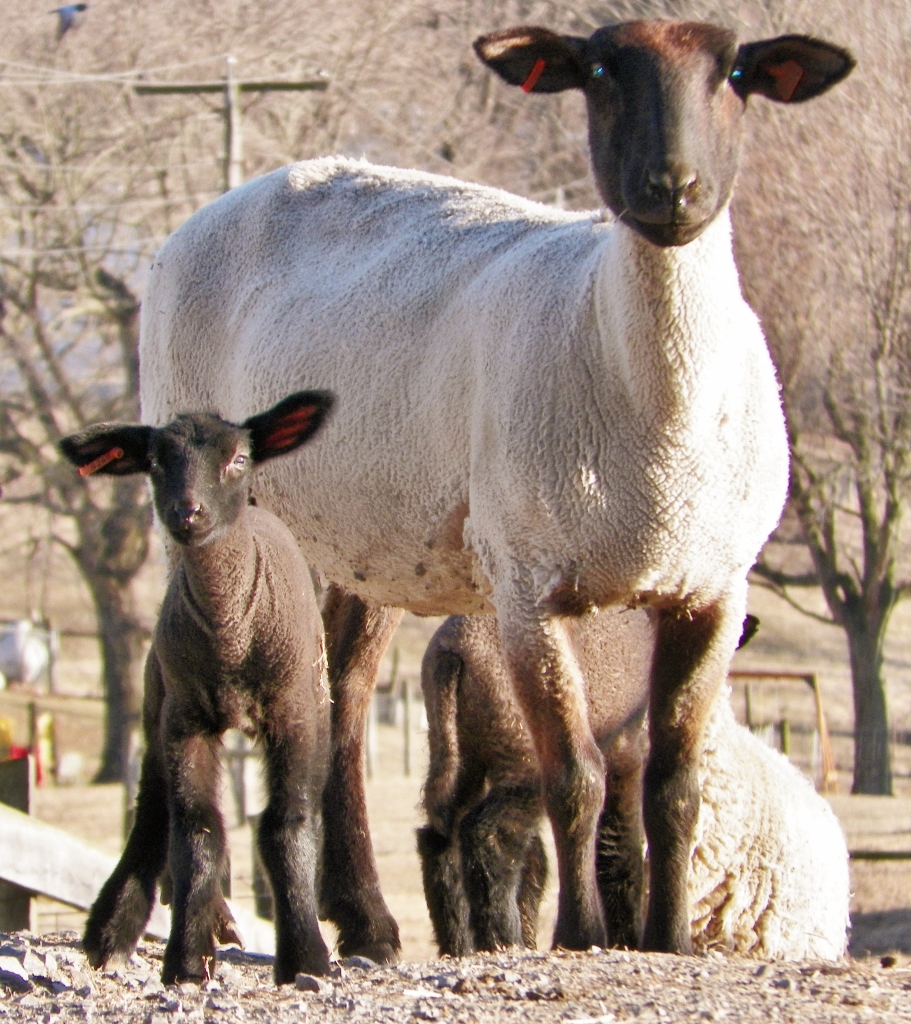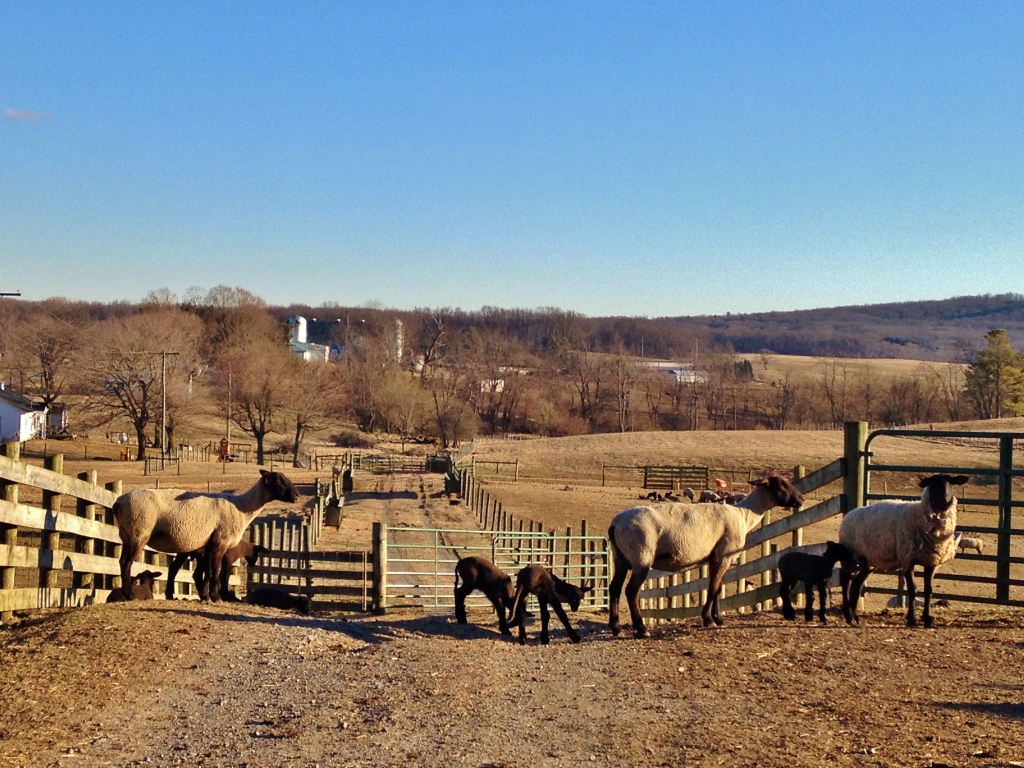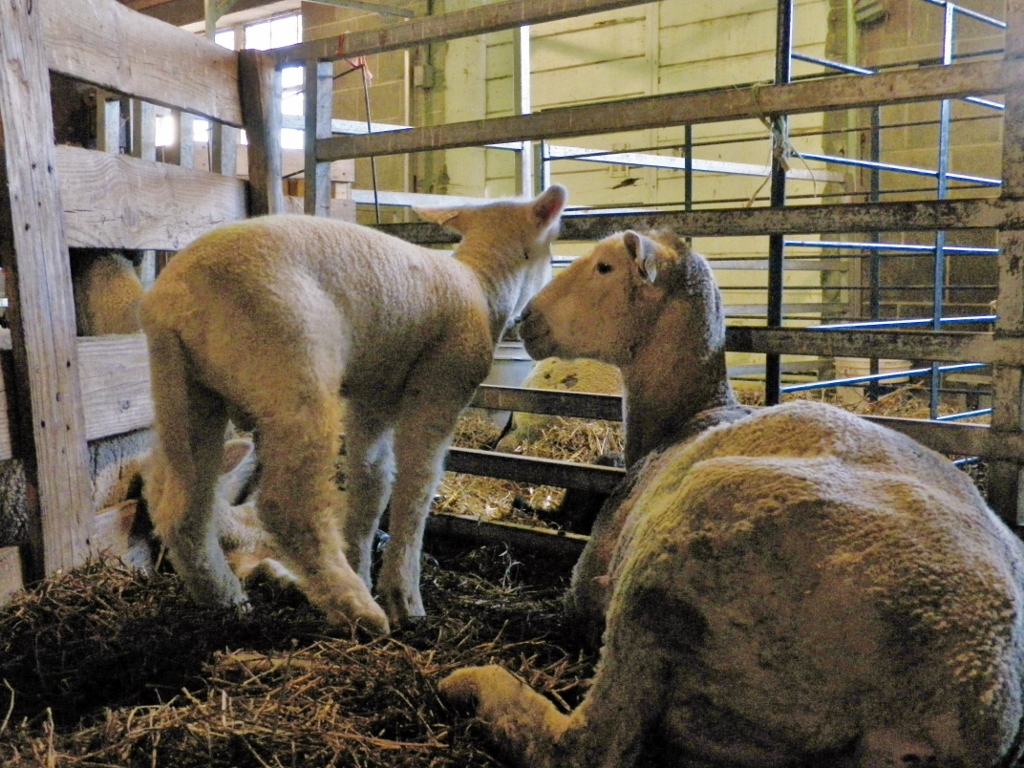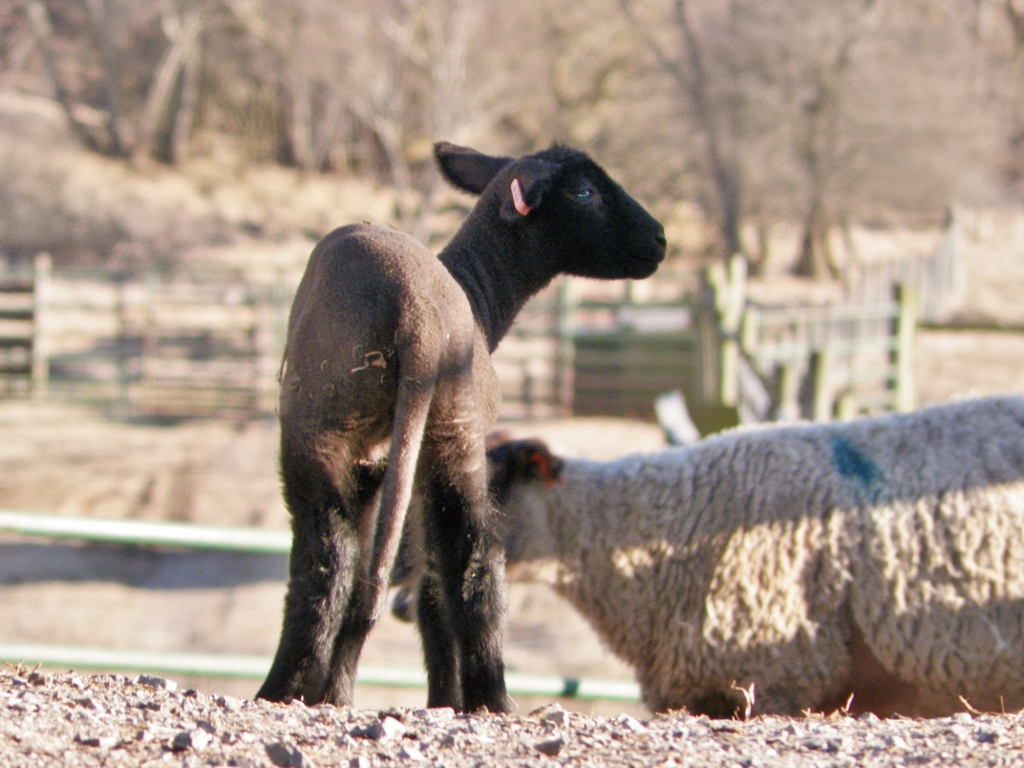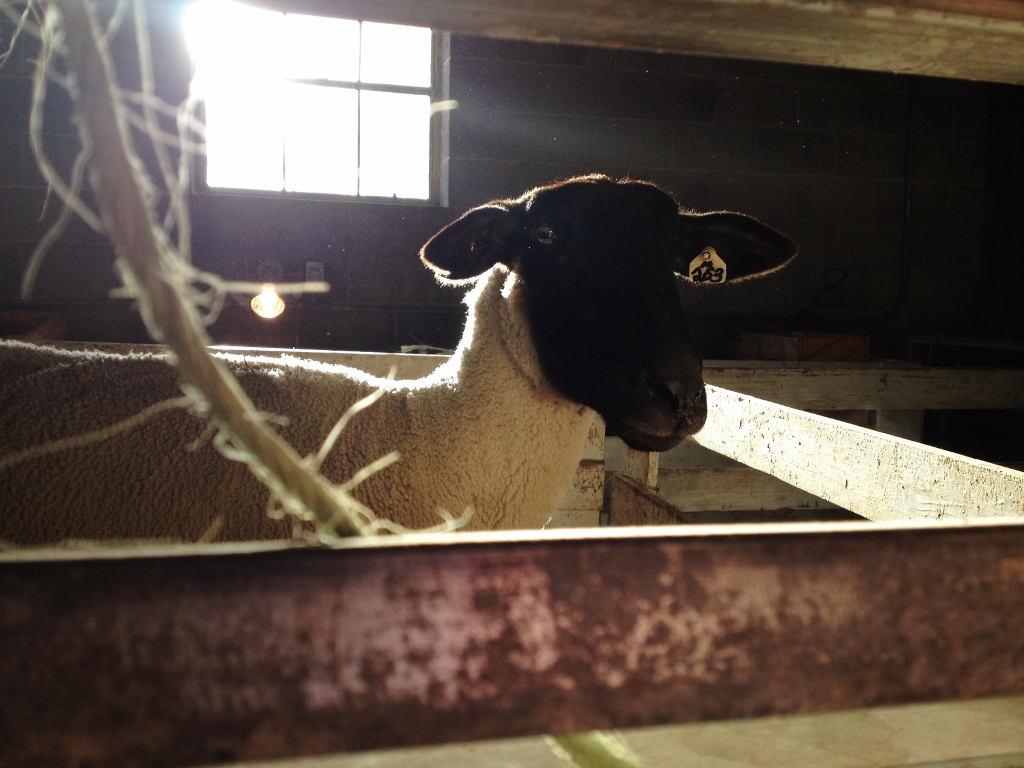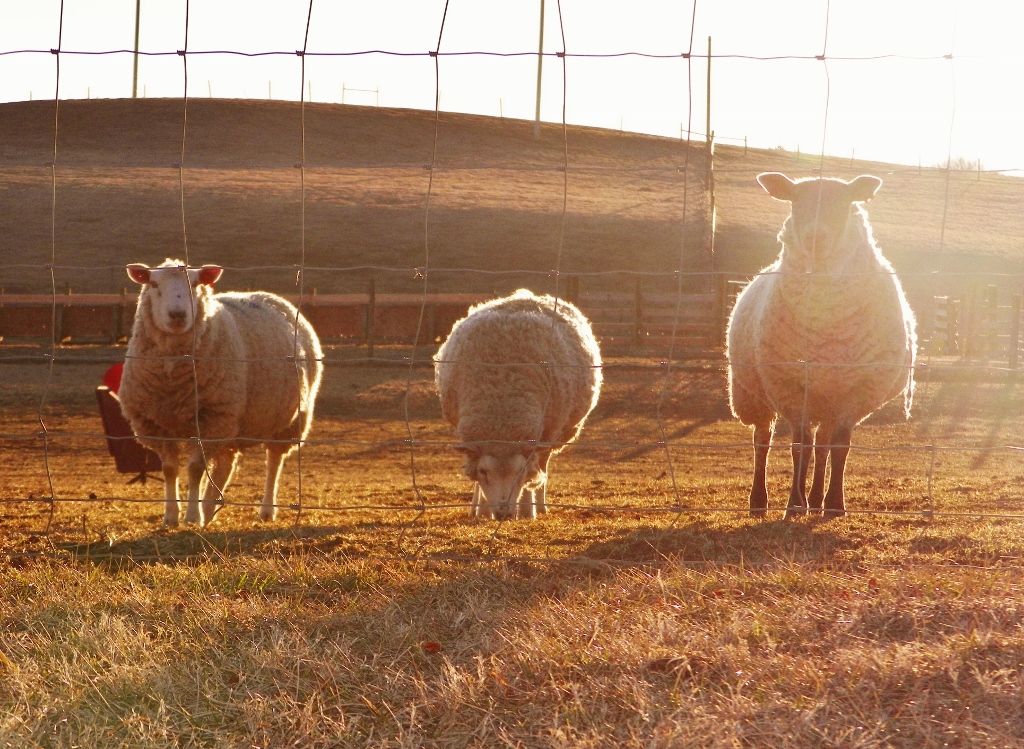While in past years the Amelia County operation has been home to a herd of Kiko goats and several outstanding performance-tested bucks, Robie and Angie Robinson and their children have spent the past twelve years shifting their focus towards growing and improving their sheep and cattle herds.
Like many farmers, the Robinsons raise a little bit of everything to sustain their family—chickens, meat from their livestock, and a large garden with everything from asparagus to onions. While they also finish, harvest, and sell some meat to a group of local customers, they market most of their animals including their weaned feeder calves conventionally on the livestock market as most local cattlemen do.
However, their cowherd is rather unique—it consists primarily of Devons, not to be confused with Milking Devons which are also rare in this area. Devons are a hardy, red-coated breed from England and they come in the relatively small to moderate frame size that Robie maintains as a goal for his breeding program. He pays particular attention to the genetics of his herd through bull selection and culling. Because he relies on a forage-based production system, he wants cows that are programmed to efficiently convert grass to milk for their calves and he wants beef calves that grow well on a grass-based diet. Like the many other cow-calf operations in the region, most of the calves will be weaned and sold as “feeder calves” to buyers who will take them elsewhere for more growth and “finishing” prior to harvest. However, since Robie finishes some of his own animals on grass and harvests them for customers, he pays particular attention to carcass quality traits when he selects bulls for his program.
While driving past Bluestem, it is hard to miss the Robinsons’ herd of sheep. After all, relatively few people in Southside Virginia still raise sizable herds of sheep. Robie made the transition after he noticed more desirable marketing opportunities for his sheep than for his goats, and today he raises them primarily for the Easter market, a prime window for selling lambs.
Like his beef herd, Robie’s sheep are also unique. His ewes are mostly Katahdins, a breed of hair sheep that requires no shearing because the animals shed their coats in the spring. Katahdins have been recognized for their success on grass, high fertility, and adaptability to a variety of conditions, making them an excellent fit for the Robinsons and their forage-based grazing management program. While some breeds traditionally lamb indoors and require special care to ensure good mothering and survival immediately after lambing, Katahdins are well-suited for “pasture lambing,” and Robie notes that he rarely has to provide any assistance to his ewes at lambing time.
As with his cattle, he uses careful culling as a tool to reach towards his goals for herd genetics. Ewes that fail to produce and raise twins are generally removed in favor of ewes who are predisposed to prolific lambing and good mothering traits. He also culls in favor of sound feet and easy shedding. The Robinsons have managed to import desirable genetics into the herd via purchasing performance-tested rams from University of Maryland and Virginia Tech.
Sheep are notorious for wearing out pastures and cattle can be equally hard on forages if producers do not manage their grazing systems carefully. Since the Robinsons rely on grass to do all the legwork for growth and milk production for both species, they have prioritized pasture care on the operation to meet their needs. Robie has a few goats in every field with the sheep because they tend to graze onions and some of the other hard-to-control broadleaf weeds that sheep may pass over.
While he used to apply conventional fertilizer regularly, Robie’s philosophy on fertility management has shifted over the years and today he prefers to rely mostly on chicken litter when it is needed. However, when using litter, he notes that he must take care not to overload the field with certain nutrients, especially phosphorous. Like all farmers, he occasionally needs to lime his fields to adjust the soil pH. He manages his grazing strategy according to conditions—in some cases, he chooses to “flash graze” his fields to manage bouts of rapid spring top growth.
A visit to the Robinson farm yields a blue-green view of plentiful orchardgrass throughout the sheep pastures. Orchardgrass is a high-quality, highly-palatable species that also makes excellent hay. However, if it is mowed or grazed repeatedly close to the ground, it does not tend to persist. Robie uses a haybine instead of a disc mower when he cuts his fields for hay, and over the years he has seen that his orchardgrass has thrived and persisted for much longer than expected.
Mixed with the orchardgrass is some hairy vetch and plentiful clover, much of which turned up in the pasture on its own. Robie planted some stands of hybrid Bermuda grass experimentally in past years and those stands remain productive each summer. He has also planted Red River and Quick and Big crabgrass, both of which make excellent forage and seem to reseed themselves readily.
Bluestem has changed considerably over the past twelve years, as have Robie and Angie’s production strategies. Robie used to engage in row crop production before favoring livestock—the farm as it stands today was started with twelve registered angus cattle. Around the same time that Robie gained an interest in Devons and Katahdins, he also shifted his paradigm surrounding farm management in favor of grass ecology and robust soil microorganisms. “I was a cattleman, then I was a grass farmer, now I’m a mycologist,” he jokes. Nonetheless, his goals for building healthy land and soil are serious, and the proof is in the results—healthy lambs and calves, green pastures, and happy customers.
Additional Resources for Readers:
Sheep and Goat publications from Virginia Cooperative Extension
Beef cattle publications from Virginia Cooperative Extension
Pasture and forage publications from Virginia Cooperative Extension

